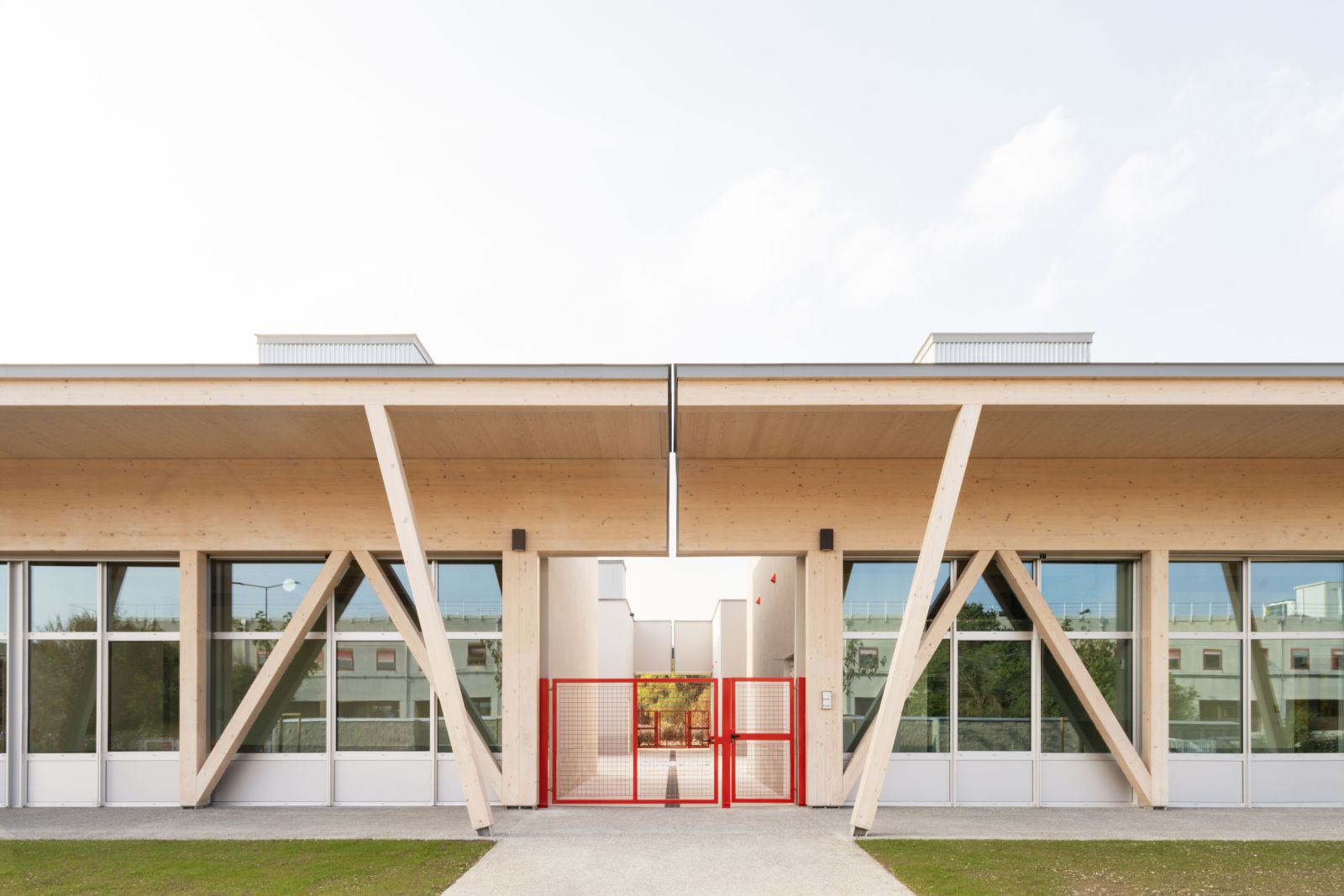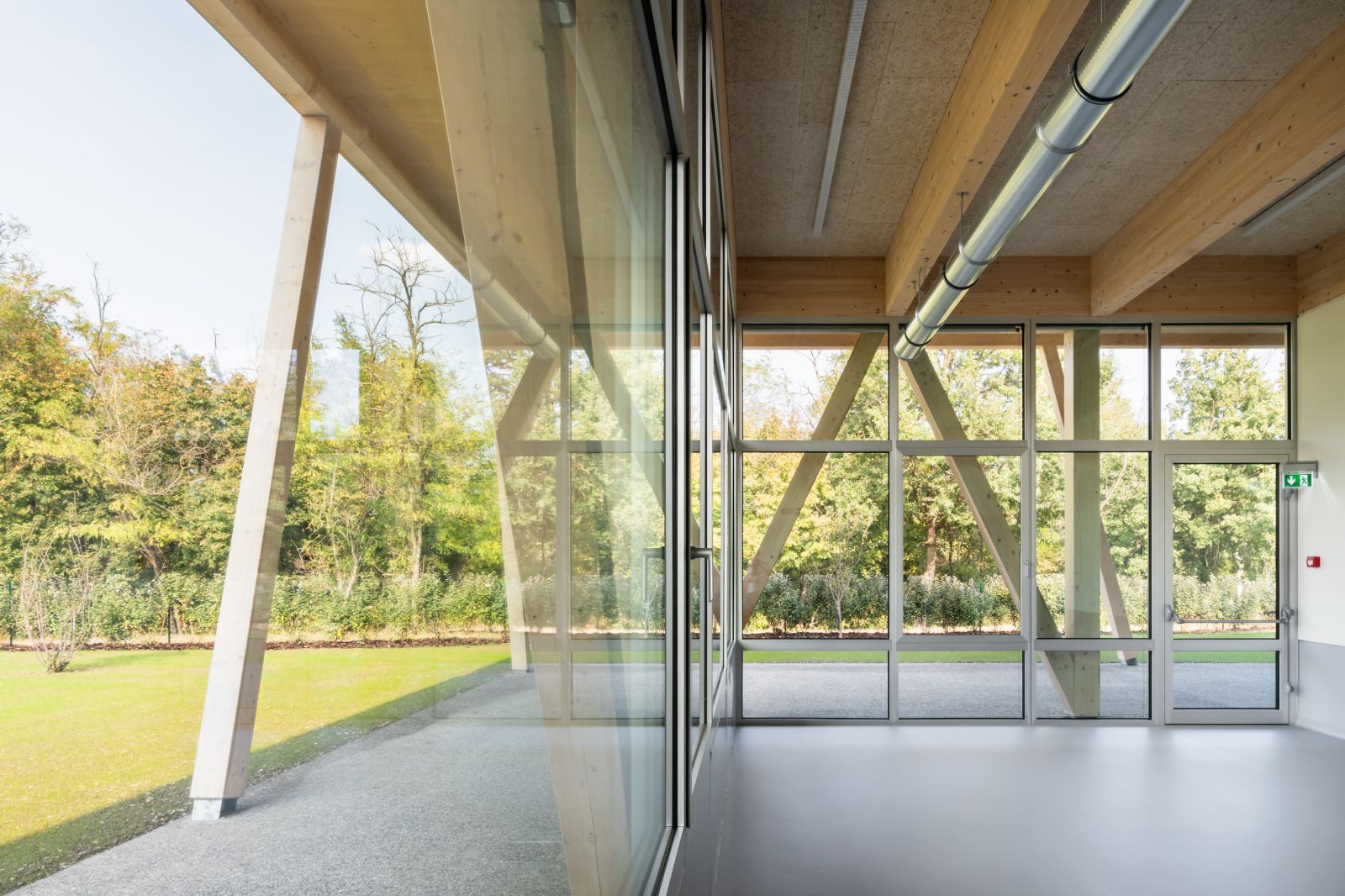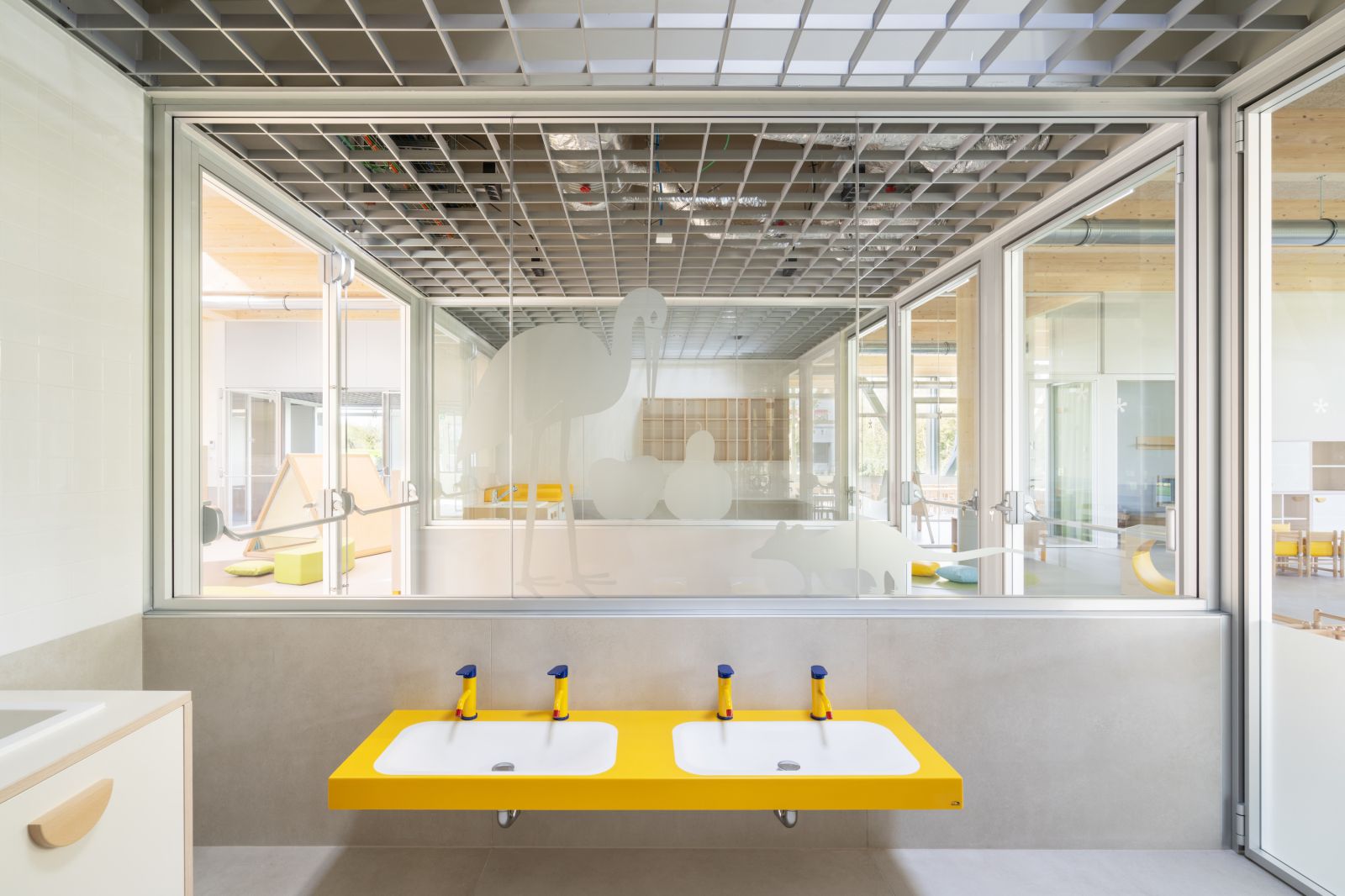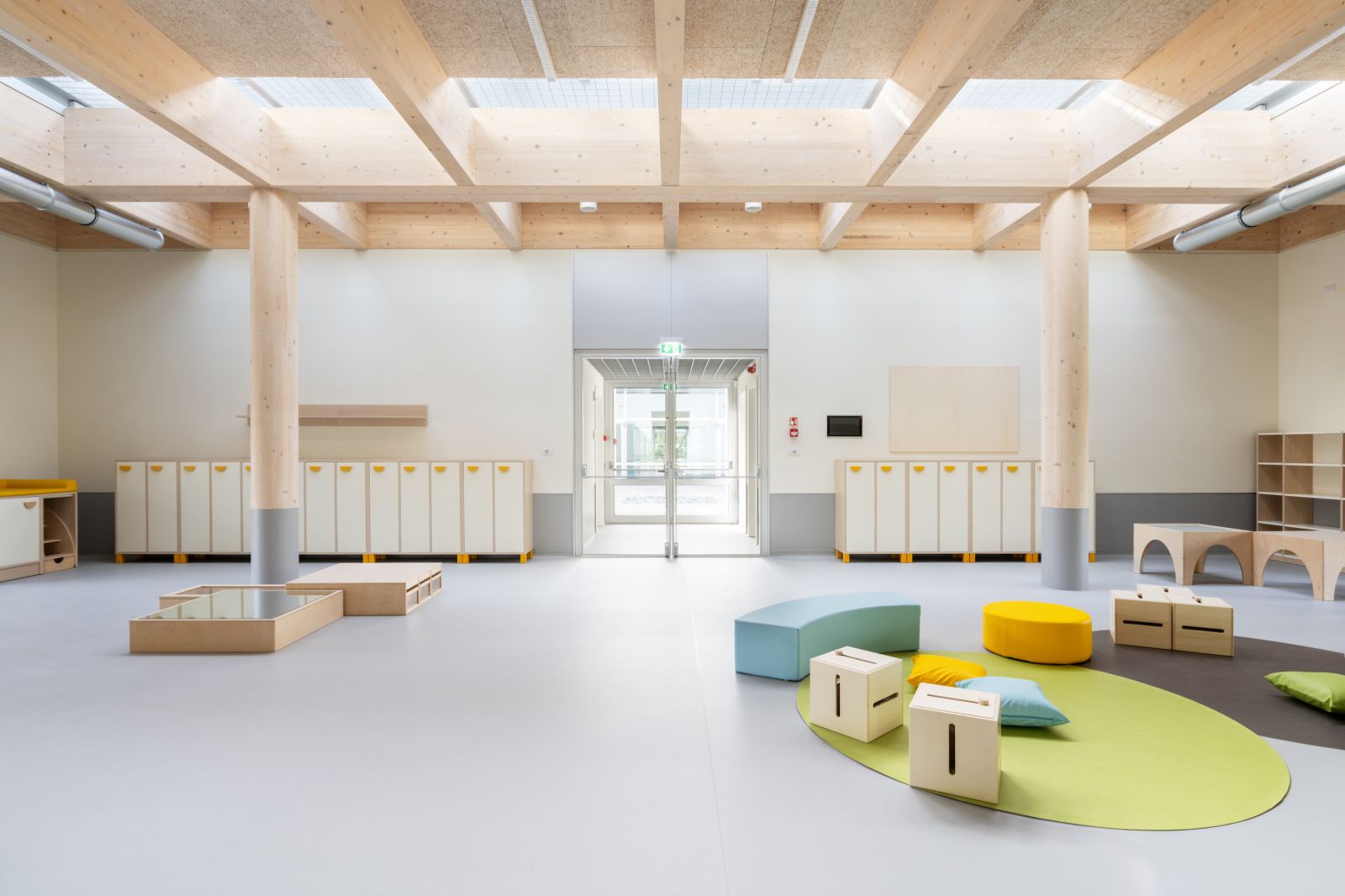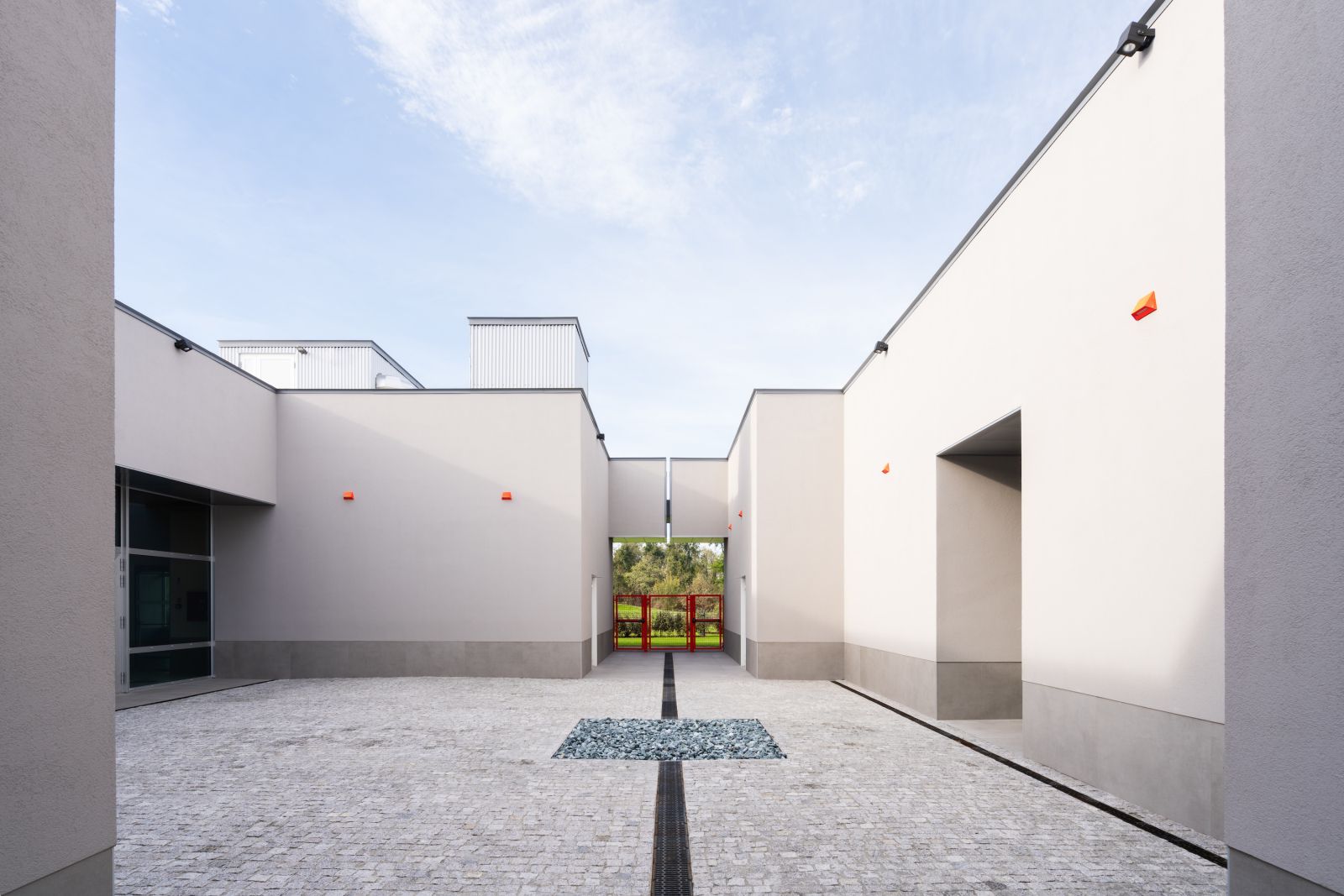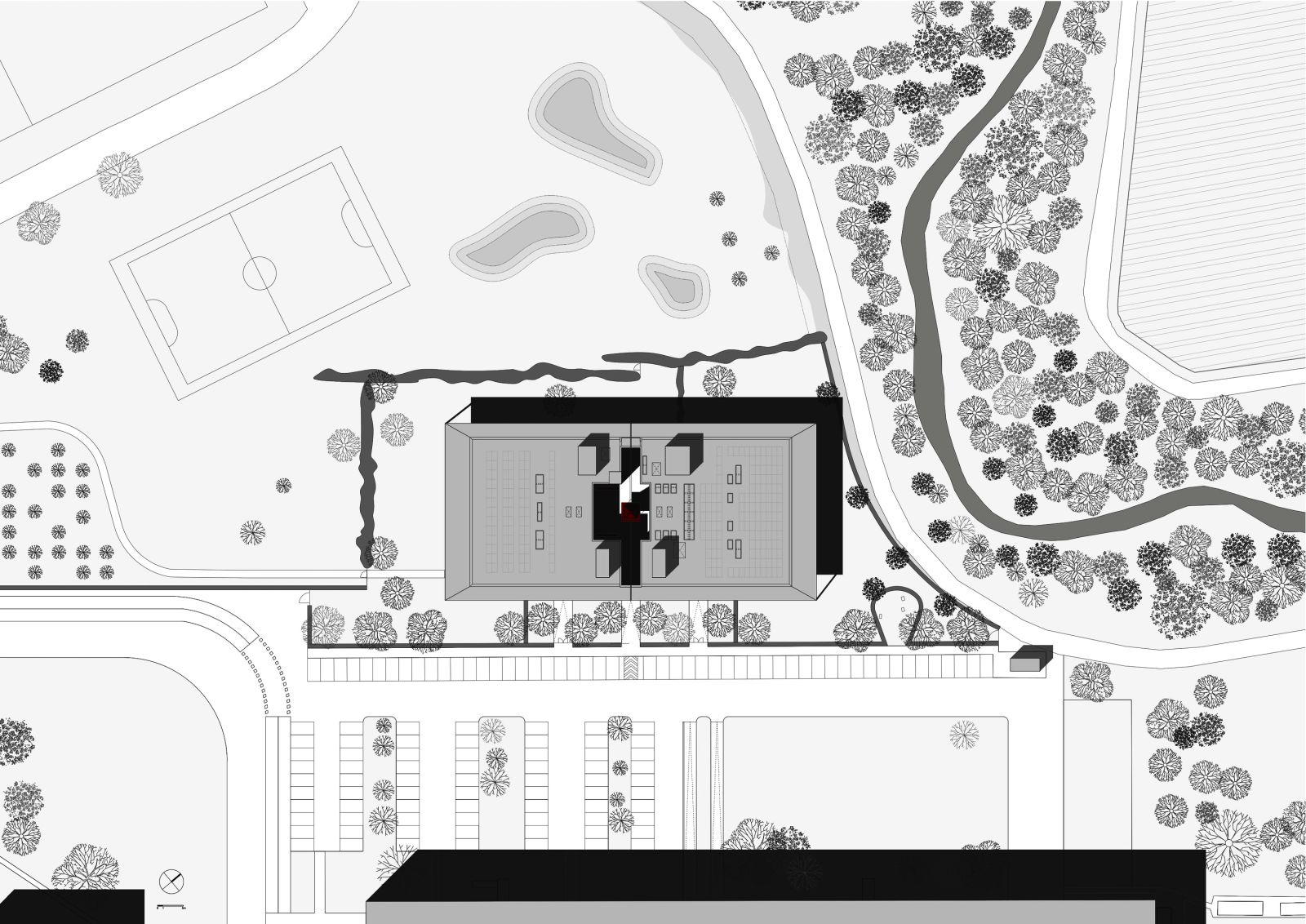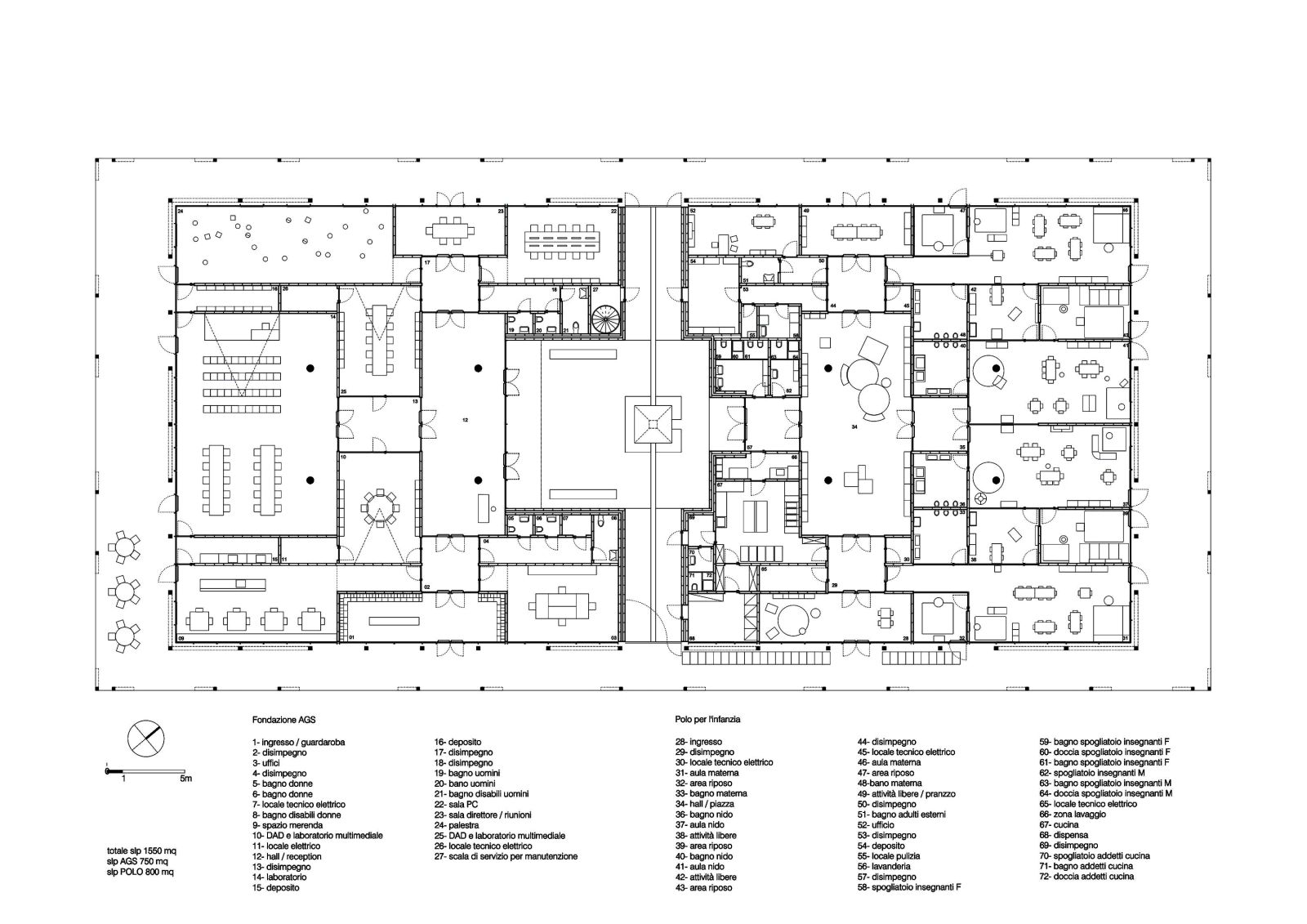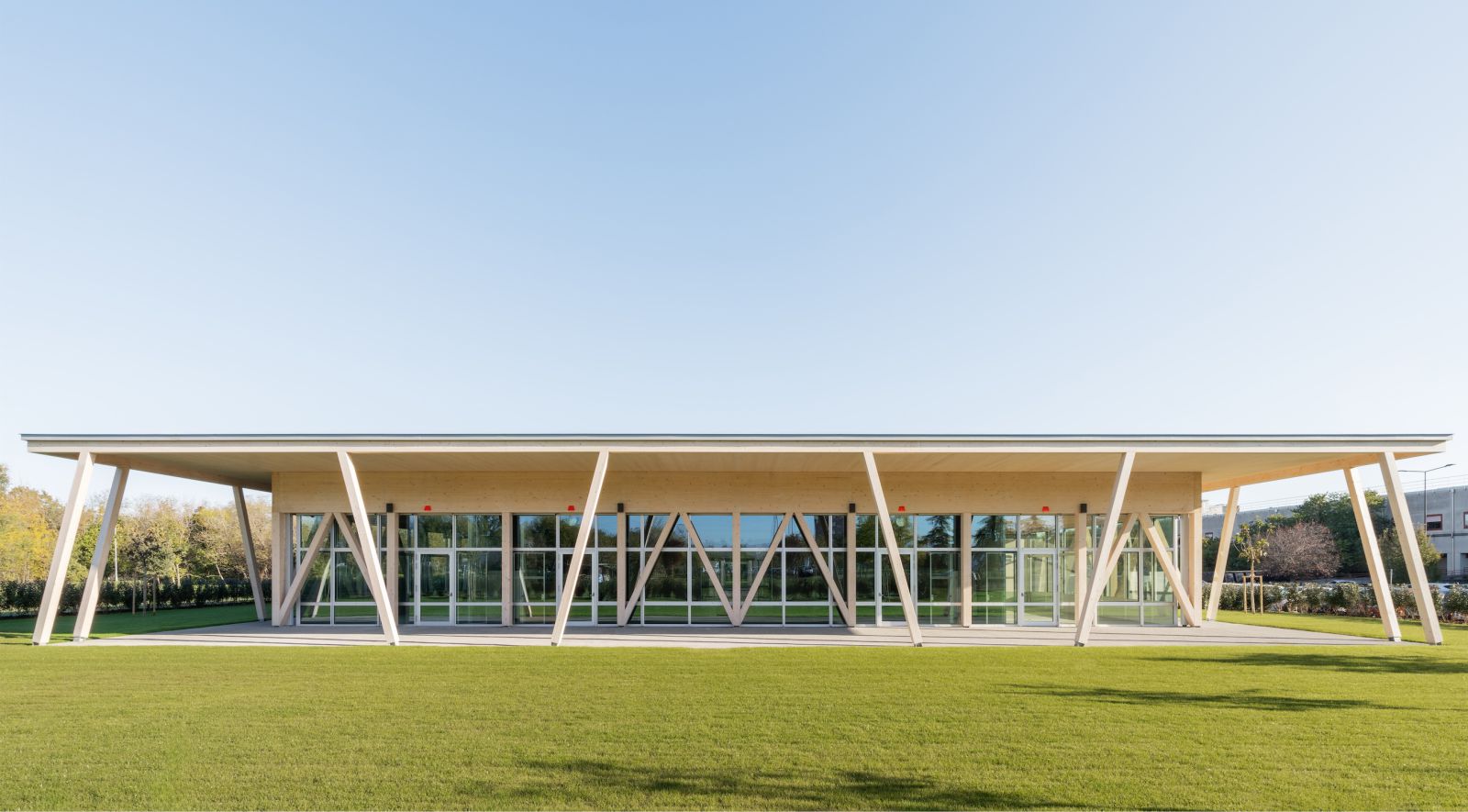Designed by Enrico Molteni Architecture, this innovative hub consists of two interconnected buildings, identical and specular, each embodying a distinct purpose within a shared educational ethos. One of the buildings serves as a nursery and kindergarten, catering to children aged 0 to 6 and providing essential support for university employees and students.
The other building is dedicated to fostering cultural and social inclusion for vulnerable children aged 10 to 14. Nestled within the serene surroundings of the university park in southern Parma, in an area adjacent to the Cinghio stream, beyond which lie cultivated fields, the building stands as a lightweight pavilion, one floor tall. Encircled by a portico of slender, gently inclined supports, it exudes a sense of openness and accessibility.
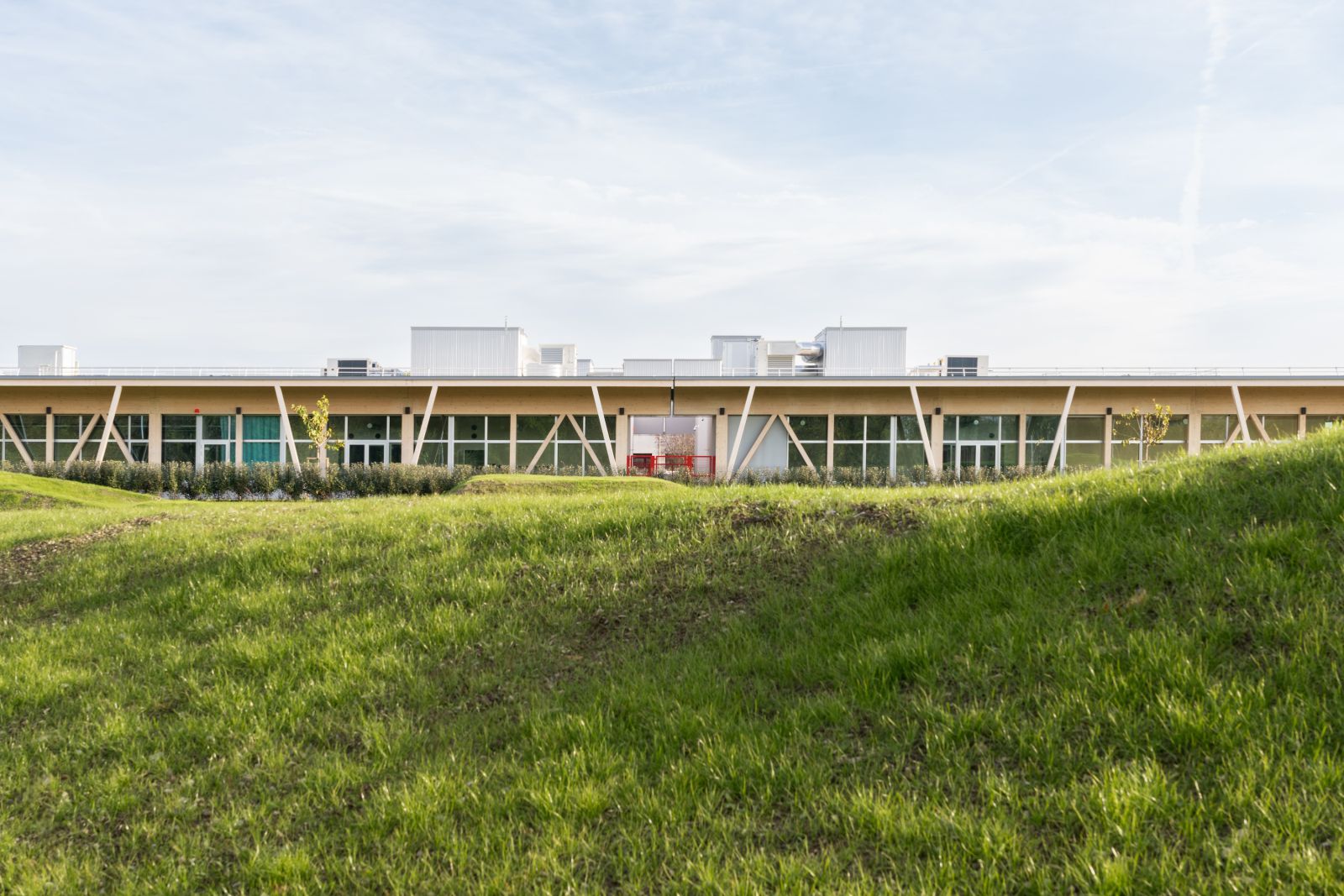
The pavilion’s rectangular shape is achieved by juxtaposing two perfectly square structures, with an inviting open space for interaction at their intersection. Constructed with a focuson sustainability and efficiency, the building employs dry construction methods and utilizes laminated wood and CLT panels for its loadbearing structure and floors.
Large glazed windows adorn the perimeter, flooding the interior with natural light and connecting occupants with the surrounding landscape. Completed in the autumn of 2023 after just over a year of construction, this 2,450-squaremeter facility stands as a testament to the power of collaboration and innovative design in creating inclusive educational environments.
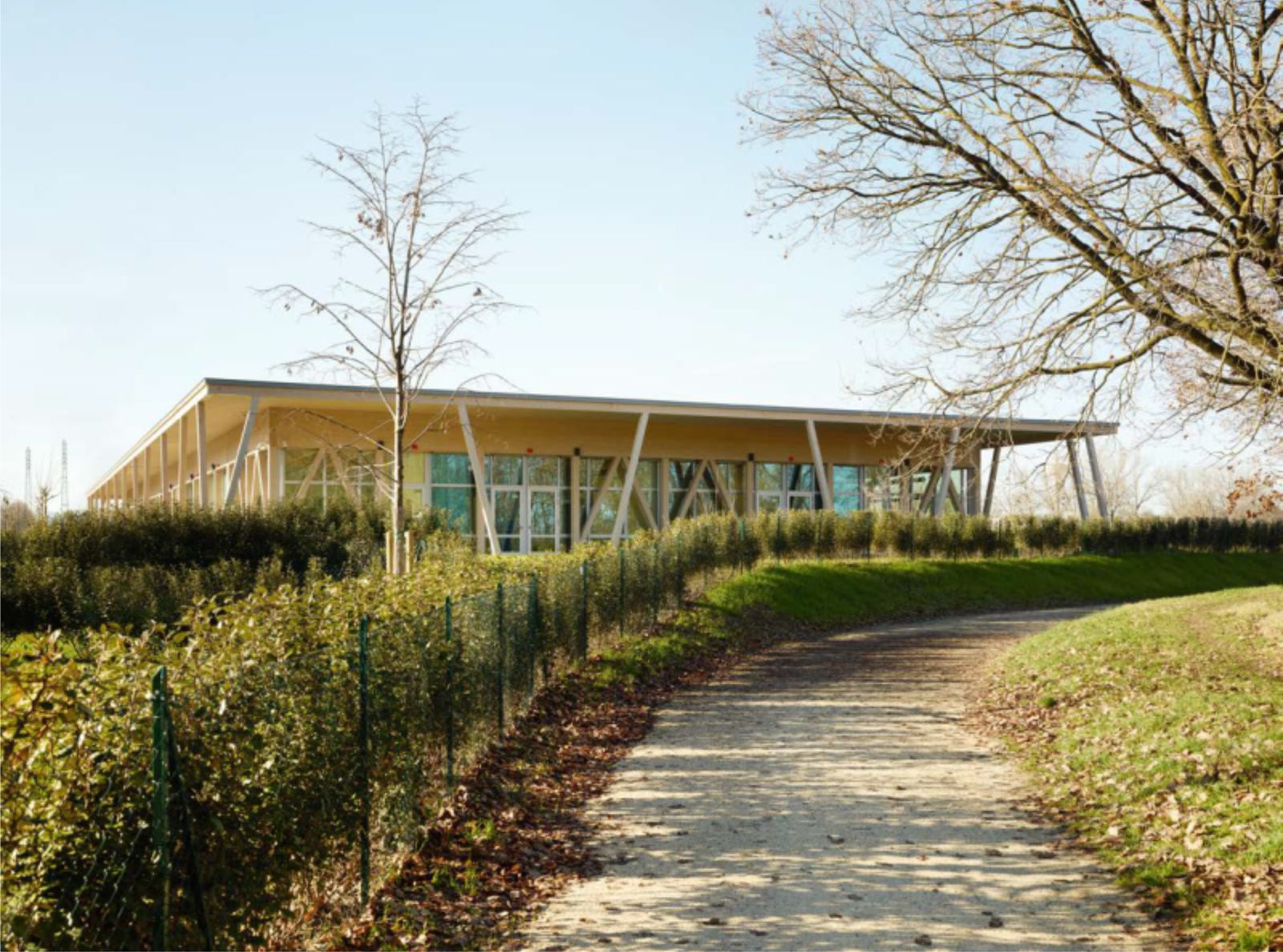
Inclusive education center in Parma, Italy
The fact that the University of Parma and the Accademia dei Giorni Straordinari Foundation joined forces to undertake something they could have done individually is the fundamental aspect that the project aimed to express in architectural forms.
The two required buildings, one for the 0-6 Childhood Hub (a rare example in Italy) – public – and one for the education of preadolescent fragile youths – private – are entirely independent. However, in this diversity and necessary autonomy, the fundamental concept of the project was that of equality, to the extent that the architecture of the AGS Foundation and that of the Childhood Hub are the same architecture.
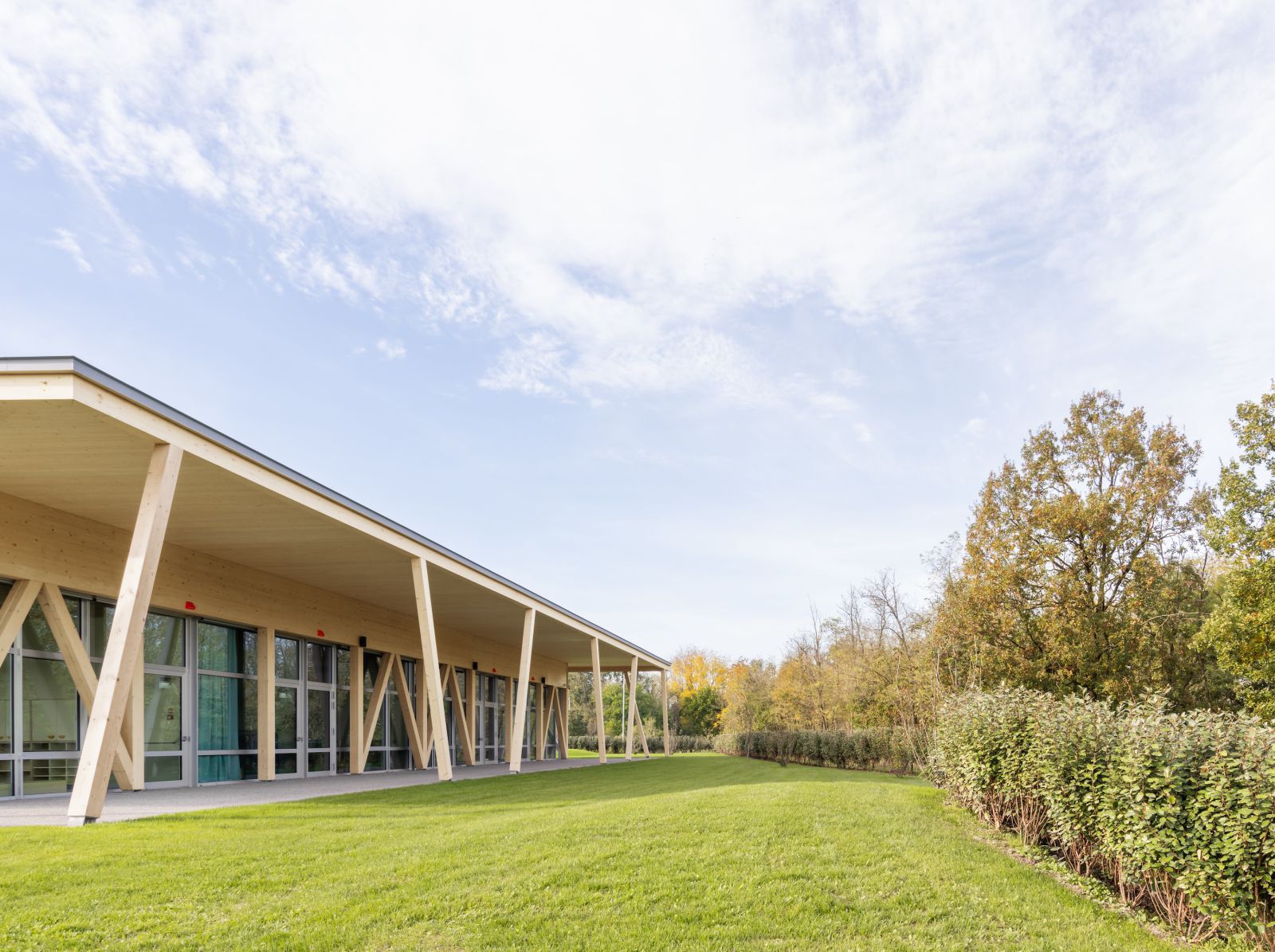
Two buildings in one, similar and symmetrical. Two faces, one head: like a Janus, mysterious Roman god with two faces. The image of Janus, its duality and symmetry, but above all its unity and indivisibility, has been, from the beginning, the clearest conceptual reference of this project. Two faces, one head. Choosing an approach of integration into the community of the campus to which it is an integral part, the new pavilion is positioned following the same orthogonal grid, at a 45° angle to the North, which organizes all existing buildings.
The specific identity of the new building is ensured by its architectural and material expression, contrasting with the existing architectures. The two bodies it consists of face opposite sides: the Kindergarten, more protected, towards the Cinghio Stream, and the AGS Foundation towards Giocampus, a sports association integrated with the AGS Foundation. A transversal path cuts the building in half, connecting the parking area to the green area of the University Sports Center (CUS).

Externally, the building’s image is defined by its entirely wooden structure. The portico, standing at a height of 5m and characterized by slender, slightly inclined supports, envelops the entire structure following the principle of radial symmetry, typically distinguishing a public building from a private or service building. The floor plan of the project consists of two squares, physically separated by a 12 cm cut.
The plan composition is strongly geometric, employing double symmetries, whole or shaped figures, nested together: 72 different spaces by function and size, all generated from a common matrix of 360x360x360cm and submultiples, complementary to each other like a perfect puzzle. The pavilion is a puzzle. Internally, each space connects at points tangent to others, and at these points, glass doors open.
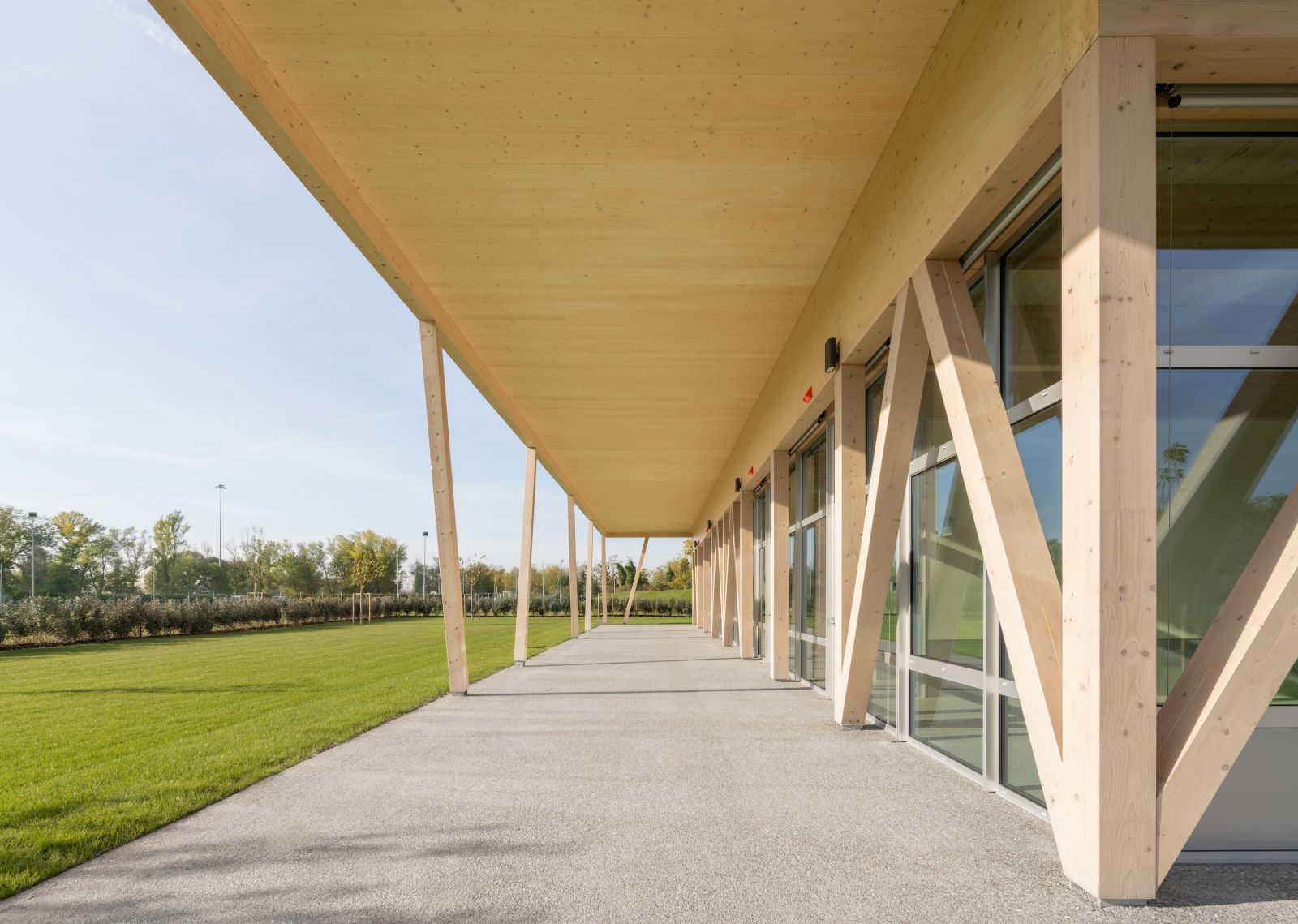
The building is conceived as architecture entirely constructed with dry construction systems, with a load-bearing wooden structure consisting of laminated beams-columns and CLT panels for the floors, featuring large glazed openings for the perimeter facades. The entire surface of approximately 900 sqm is supported by four central, circular pillars and appropriately braced perimeter pillars. In terms of sustainability, the building was constructed according to Nearly Zero Energy Building (NZEB) criteria with high energy efficiency and achieves a classification of 22.45 kWh/m2 per year.
Mechanical ventilation is provided through a ducted ceiling system, external motorized shading with curtains, winter heating and summer cooling through radiant floor panels, building automation system, and a photovoltaic panel system with a capacity of 96 kWp, covering almost the entire energy needs of the building. The landscaping project aims to provide conditions for children and adolescents to explore and inhabit the gardens as part of a larger green system. Source by Enrico Molteni Architecture.

- Location: Parco Area delle Scienze, Campus UNIPR, Parma, Italy
- Architect: Enrico Molteni Architecture
- Design team: Enrico Molteni with Alessandro Ferrazzano
- Consultants Structures: Guidetti Serri Studio Ingegneria
- Mechanical systems: Massimo Bocchi
- Electrical systems: Massimo Fontanili
- Wood: DUOPUU (Paolo Simeone)
- Landscape: Luigi Massolo
- Acoustics: Italian Acoustics Institute S.r.l.
- Works supervisor, fire brigade and local health authority consultant: Silvano Dondi
- Construction management: Lorenzo Serri
- Safety coordinator: Alessandro Mori
- Responsible for Public Procurement: Pierangelo Spina, UNIPR
- Client: Accademia dei Giorni Straordinari Foundation and University of Parma
- Data Built area: 2.450 square meters
- Lot area: 5.600 square meters
- Cost: 5.000.000 Euros
- Schedule: September 2023
- Photographs: Marco Cappelletti Courtesy of The Architecture Curator
